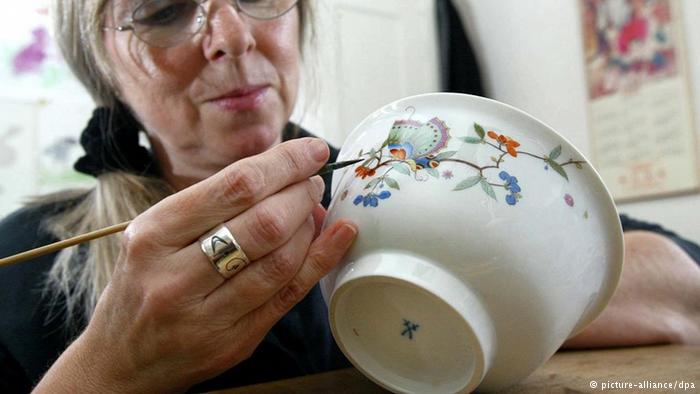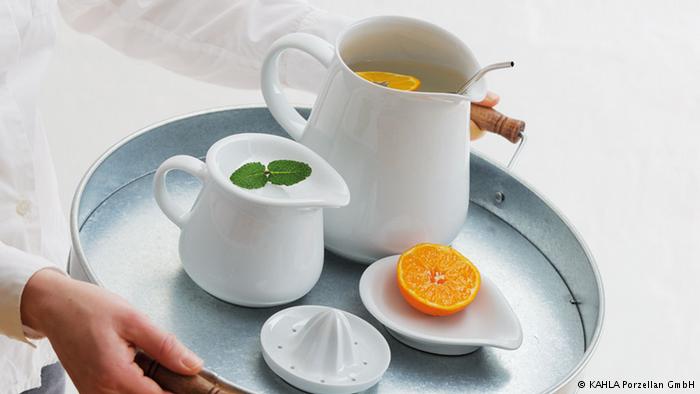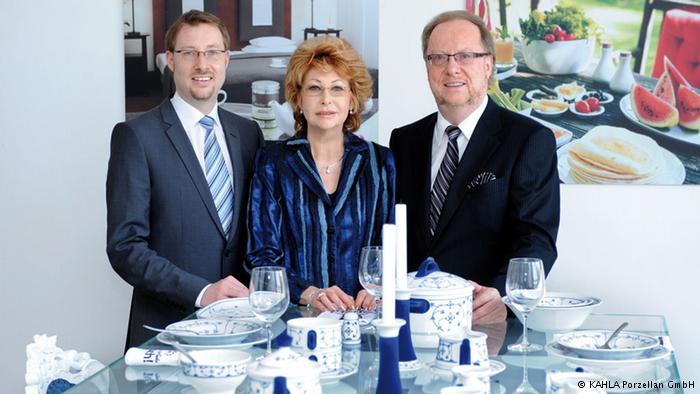Company
Porcelain with a long Tradition: Meissen and Kahla
Two large porcelain manufacture in East Germany the Wende survived. The state-owned Meissen porcelain, writes red Numbers, competitor, Kahla is on the market successfully. What makes the difference?

By hand: decoration in the Meissen manufactory
Even before the porcelain industry nationwide in the crisis, it hit the ceramic manufacturers of the former GDR. Almost 20 factories were State-owned enterprises of the fine, 18,000 people had a Job. Today, there are only a few hundreds, you either work at the State porcelain manufactory of Meissen, Europe’s oldest business of this kind, or in Kahla, where household and Gastronomieware is made.
Two companies, could not be more different. “The German porcelain industry has to be late on changing user behavior reacts,” says Holger Raithel, managing partner of Kahla porcelain in the same place in Thuringia.

Do not slip: Magic Grip is an invention of Kahla
From for the coffee pot
The coffee pot was from the machines replaced, and cheap, non-branded cereal bowls conquered the kitchens, even before the domestic porcelain industry at all thought about it, the cereal bowls. “We have always asked: What need a Porzellankäufer? What plates you need on the Computer,” says Raithel.
New shapes and technical innovations at the Material, with a clear signature of the trained physicist Holger Raithel have produced one of the most innovative porcelain companies in Europe. Decorated with nearly a hundred international Design awards for design, functionality, and environmental compatibility.

The owners: Holger, Rositta and Günther Raithel (v. l.)
The Cup from the center to the edge
Raithel leads the business “sustainable”, as he emphasizes. His father Jürgen, a former Board member of the Bavarian porcelain manufacturer Rosenthal shows, took over Kahla 1994. He has invested in production technology and opening up new international marketing channels and lines of business. So the professional range of products for the catering industry and the business with promotional items, the one-third of their turnover.
An almost unparalleled success story, writes economic historian Erik Lindner. And this in a time, as the porcelain industry in Germany collapsed. Since 1991 plunged the number of employees according to the Association of the Ceramic industry, from 25,000 to the current level of around 4000 employees and revenues of 800 million to 300 million in 2014. Kahla, however, came in 2015 to around 30 million euros in sales and writes according to Raithel since the turn of the Millennium in the black.
But also for over 170 years, the existing family business was at the end of the 1990s, are in trouble. Subsidies had to be after a long legal dispute with the EU, including interest to be repaid. In total there were only about four million euros of public funding is now fully privatised operation.

When time is of the festive must be: Luxurious from Meissen
Luxurious Saxony
Peanuts, if you move to Saxony look. Sachsenkönig August the Strong had the “White Gold” 300 years ago can create, to the coveted Good the Treasury to fill. Since the turn is the other way around. The sole shareholder is the Federal state of Saxony. The free state was stuck alone since the year 2000 approximately 20 million euros in the company and granted loans in the amount of 20 million euros. Nevertheless, for the financial year 2014 Rekordminus of 19.2 million euros is expected. Official Figures there are, however, not until now.
Meissen stands for first-class hand made goods in the high price Segment. The decline and fall of the tableware is responsible for the fact that Meissen porcelain is always more to the shop Keeper. With renovations, the company, already in 2008, the forward flight. The range in the core business has been slashed the workforce from 1000 to about 600 employees again reduced and new products under the old Label on the market.

That also comes from the Meissen figures: figures made of porcelain to four-digit prices.
Hardly again to recognize
In addition, there were fine watches, finest fabrics, carpets and clothes. “This is Meissen today, you recognize it is actually hardly ever again,” says economic historian Lindner. They sat increasingly on affluent customers in foreign countries, the man in the expensive Flagship Stores to lure wanted, such as the Villa Meissen Couture in Shanghai or in a Luxuskaufhaus in Manila, the capital of the Philippines. The subsidiary in Milan, organized particularly the development and delivery of the new product groups. But the hoped-for profit margins remained.
“Success is relative,” as the new managing Director of the State porcelain manufactory Meissen GmbH, Tillmann Blaschke. A success it would have, the negative effects to a minimum.” Modest tones, the him of his risikobereiten predecessor Christian Kurtzke differ. As a “narcissist with a gold edge” had made him the Manager magazine mocked. In March of last year, he left suddenly the company.
In the future, if you want more sales with Porzellanprodukten set, it is called. After all, it was in spite of the new luxury products are the main source of sales in 2014, with nearly 90 percent of the area of porcelain. Whether a reassessment of the traditional business can not save, still remains questionable. This is because, especially for smaller manufacturers, the market will remain, according to Keramikverband tense.
Ultimately, it was also a political decision whether and how in Meissen goes on, says Blaschke. Finally, the state of Saxony and thus the taxpayers the full financial risk. As a precaution, bought the state through a specially established Foundation already in 2014, all of the Museum funds of the Meissen porcelain-Stiftung GmbH in the amount of six million euros.
